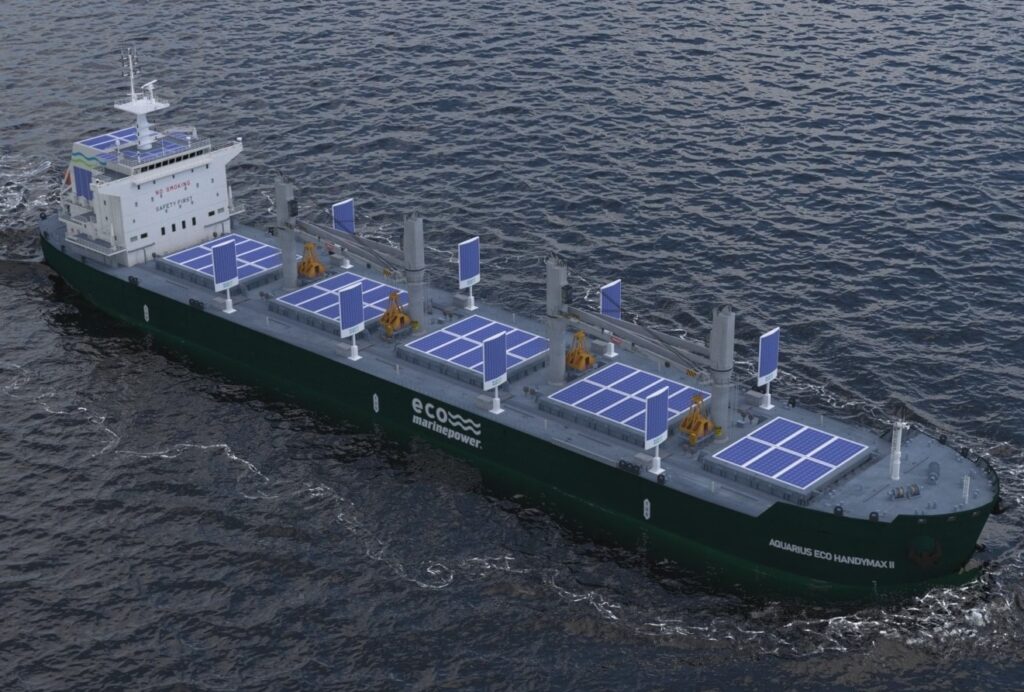Zero-emission Handymax bulker design emerges in Japan
2022-04-28 09:46 Release person:Schindler Logistics
April 27, 2022, by
Japanese technology company Eco Marine Power has unveiled details of a new zero-emission Handymax bulker design that incorporates renewable energy solutions, electric propulsion and fuel cells.
Known as the Aquarius Eco Handymax II, the ship design concept is a part of an ongoing zero-emission ship design project.
It encompasses energy-saving technologies that are either currently available or under development, Eco Marine Power claims.

The design includes the Aquarius Marine Renewable Energy (Aquarius MRE), integrated sail-assisted propulsion and solar power system and a range of energy-saving devices such as an air lubrication system (ALS) as well as electric propulsion and fuel cells.
To remind, Aquarius MRE received by ClassNK in 2021. Further patent related to the system was applied for recently, the developer informed.
According to Eco Marine Power, some of the technologies incorporated into the Aquarius Eco Handymax II design will be installed for evaluation purposes on an actual Handymax bulker this year and as the project continues further technologies will be deployed.
The performance of the energy-saving devices installed on the vessel will be evaluated in cooperation with the shipowner and strategic partners.
Without revealing further details, the Japanese firm said that several companies are cooperating on R&D activities related to the Aquarius Eco Handymax II within the framework of the with additional companies expected to join this year.
Commenting on the project, Greg Atkinson, president and CTO at Eco Marine Power, said: “The Aquarius Eco Handymax is the result of years of research & development including shore-based & ship-based trials. The design focus is not on any one solution or technology, however, but rather how various alternative power sources and energy saving devices can work together to achieve the zero-emissions operation of a large ship.”




